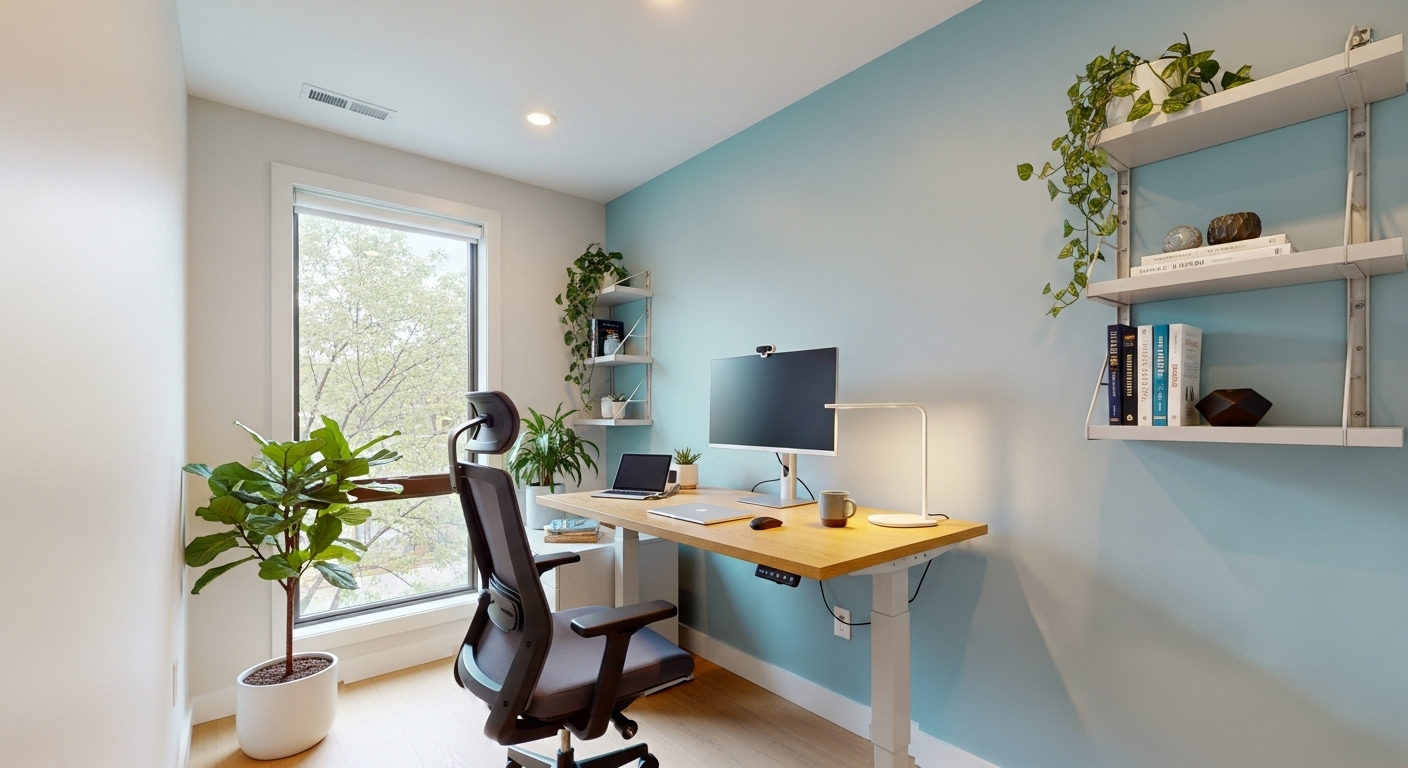The great remote work experiment is over, and the verdict is in: for millions, it’s here to stay. What began as a temporary measure has blossomed into a permanent career model, shifting the professional landscape from office-centric to human-centric. However, this newfound freedom comes with its own set of challenges. The lines between work and life have blurred into a single, continuous feed, leading to burnout, isolation, and a sense of being perpetually ‘on.’ The key to navigating this new reality isn’t about finding a perfect ‘balance’—an often-elusive myth—but about intentional ‘integration.’ This article introduces ‘The Anywhere Agenda,’ a comprehensive framework designed to help you move beyond merely surviving remote work to actively thriving in it. We will explore the critical pillars of this agenda: transforming your mindset about the ‘office,’ mastering asynchronous communication, building powerful routines, fostering genuine connection, prioritizing holistic well-being, and proactively managing your career growth from any location on the map.
Chapter 1: Redefining the ‘Office’ from Physical Space to Mental State
In a remote-first world, the concept of the ‘office’ has fundamentally evolved. It’s no longer a physical destination but a mental state you cultivate. The absence of a daily commute and a separate building requires us to create our own psychological boundaries to signal the start and end of the workday. Without these cues, the risk of cognitive spillover—where work thoughts dominate personal time—increases dramatically. The first step is to establish a dedicated workspace. This doesn’t necessitate a separate room; it can be a specific corner of your living room or even a designated chair at the dining table. The crucial element is consistency. This space should be used exclusively for work, training your brain to associate it with focus and productivity. Equip it with the tools you need to perform effectively, minimizing reasons to wander off. Equally important is the ‘shutdown ritual,’ a concept popularized by author Cal Newport. At the end of your day, take five to ten minutes to review your tasks, plan the next day, and formally declare your work is done. This could be as simple as closing your laptop, turning off your monitor, and saying ‘work is finished’ out loud. This act creates a clear mental dividing line, allowing you to transition fully into your personal life, present and refreshed.
Chapter 2: The Communication Cadence: Mastering Asynchronous Collaboration
The biggest operational shift in remote work is the move from synchronous to asynchronous communication. The default in an office is to grab someone for a quick chat, but this is disruptive and inefficient in a distributed team. Mastering asynchronous collaboration is the bedrock of a successful remote career. It’s about communicating effectively without the need for an immediate response. This respects different time zones, varied work schedules, and allows colleagues deep, uninterrupted focus time. The key is clarity and context. When sending a message on a platform like Slack or Microsoft Teams, or an email, assume the recipient has zero context. Write detailed, well-structured messages with clear subject lines, bullet points for key information, and a specific call to action. Instead of ‘Can we talk about the project?’, try ‘Feedback Request: Draft of Q3 Marketing Report. Please provide comments in the attached Google Doc by EOD Thursday.’ This shift reduces the need for countless follow-up meetings. A recent study showed that knowledge workers spend over half their day on ‘communication overhead.’ Asynchronous practices directly combat this.
‘Successful remote teams don’t just tolerate asynchronous communication; they champion it. They build systems of record in tools like Notion or Asana, making information accessible to everyone, anytime, which drastically reduces the reliance on real-time meetings and fosters a culture of autonomy and trust.’
By becoming a master of this communication style, you not only improve your own productivity but also become a more valuable and respected team member.
Chapter 3: Structuring Your Freedom: The Power of Rituals and Routines
The ultimate paradox of remote work is that freedom requires structure. Without the built-in schedule of a traditional office—the commute, the set lunch break, the walk to a meeting—days can become amorphous and unproductive. To thrive, you must become the architect of your own day, and the most effective tools for this are rituals and routines. Start with a consistent morning routine that doesn’t involve immediately checking your email. This could include exercise, meditation, reading, or journaling. This time is for you, and it sets a proactive, rather than reactive, tone for the day. Consider implementing a ‘fake commute’ by taking a short walk before you begin work and after you finish. This small ritual helps bookend your day and serves as a powerful psychological transition. For the workday itself, time-blocking is a game-changer. Schedule your day in focused blocks, including time for deep work, shallow tasks like email, and—crucially—breaks. Techniques like the Pomodoro Method, which involves working in 25-minute intervals with short breaks in between, can be incredibly effective for maintaining focus and preventing mental fatigue. Your end-of-day shutdown ritual is just as important as your morning routine. It’s the final signal to your brain that the professional part of your day is complete, allowing you to disengage fully and recharge for the next day. This deliberate structuring of your time is not about rigidity; it’s about creating the scaffolding that supports sustained productivity and prevents the burnout that comes from a constantly ‘on’ mentality.
Chapter 4: Combating the Isolation Epidemic: Building Connection from a Distance
While the autonomy of remote work is a significant perk, the primary drawback is often a profound sense of isolation. The spontaneous social interactions of the office—the hallway conversations, the shared coffee break, the team lunch—are absent, and they must be replaced with intentional efforts to build connection. Ignoring this social fabric can lead to disengagement, loneliness, and a decline in collaborative spirit. Proactive leaders and colleagues understand that fostering community is an active process. One of the simplest and most effective strategies is scheduling regular, non-work-related virtual gatherings. This could be a weekly ‘virtual coffee’ with a small group, where work talk is off-limits. Another powerful tool is creating interest-based channels in your team’s communication platform. A channel for #pet-photos, #cooking, or #book-club creates spaces for colleagues to connect on a personal level, mirroring the informal chats that happen naturally in an office. For team leaders, it’s vital to begin meetings with a few minutes of personal check-in. Don’t just dive into the agenda. Ask how people’s weekends were, or share a brief personal anecdote. This small investment in social connection builds trust and psychological safety. Encouraging the use of cameras during video calls, when comfortable, can also significantly enhance feelings of connection by providing crucial non-verbal cues. Ultimately, building a strong remote culture is a shared responsibility, requiring everyone to reach out, show genuine interest, and make space for the human element in a digital world.
Chapter 5: Health as a High-Performer: Prioritizing Physical and Mental Well-being
In the traditional office, your environment provides subtle nudges for physical activity: walking to a meeting, going out for lunch, or even just commuting. At home, these prompts disappear, and it’s easy to remain sedentary for hours on end, staring at a screen. Prioritizing physical and mental well-being is not a luxury in remote work; it’s a prerequisite for high performance and long-term sustainability. Start with your physical setup. An ergonomic chair, a monitor at eye level, and an external keyboard can prevent the neck, back, and wrist pain that plague many remote workers. Make movement non-negotiable. Set timers to stand up, stretch, and walk around every hour. Integrate physical activity into your day, whether it’s a morning workout, a lunchtime walk, or an evening yoga session. This not only benefits your body but also acts as a mental reset, boosting focus and creativity. Mental health is equally critical. The lack of clear boundaries can lead to chronic stress and digital burnout.
A recent survey by a leading wellness app found that 68% of remote employees report experiencing symptoms of burnout, citing an ‘inability to unplug’ as the top reason.
To counter this, practice digital hygiene. Turn off non-essential notifications, set clear ‘do not disturb’ hours, and resist the urge to check work messages outside of your defined workday. Mindfulness practices, even just five minutes of deep breathing, can help manage stress. Don’t hesitate to use company-provided mental health resources or to communicate your needs to your manager. A healthy remote worker is a productive and engaged one; treat your well-being as your most important professional asset.
Chapter 6: The Long Game: Evolving Your Career Without the Corner Office
A common fear among remote professionals is the ‘out of sight, out of mind’ phenomenon. Without the daily visibility of the office, how do you ensure your contributions are recognized and your career continues to advance? The key is to shift from passive presence to proactive visibility. Your work must speak for itself, and you must become its primary advocate. Start by meticulously documenting your accomplishments. Keep a running list of your projects, key results, and positive feedback. This isn’t for bragging; it’s data you can present during performance reviews or career discussions. Instead of just completing tasks, communicate your progress and impact. Send regular, concise updates to your manager that highlight not just what you did, but why it mattered to the team and the company’s goals. Seek feedback proactively. Don’t wait for the annual review; schedule regular check-ins with your manager to discuss your performance, challenges, and career aspirations. This demonstrates your commitment to growth. Networking also requires a more deliberate approach. Actively participate in team meetings, offer help to colleagues, and schedule virtual coffee chats with people from other departments. Building these cross-functional relationships increases your visibility and opens doors to new opportunities. Finally, invest in your skills. With the time saved on commuting, dedicate a portion of your week to online courses, certifications, or industry reading. A growing skill set is undeniable proof of your value. Career progression in a remote world is driven by tangible results and intentional communication, not just physical proximity.
Conclusion
The transition to a borderless career is more than a change in location; it’s a fundamental reinvention of our relationship with work. Adopting ‘The Anywhere Agenda’ is about taking deliberate control over your professional life to ensure it’s not just productive, but also fulfilling and sustainable. It starts with a mental shift, redefining the ‘office’ as a state of focus you can create anywhere. It’s built upon a foundation of clear, asynchronous communication that respects everyone’s time and fosters autonomy. This framework is held together by the personal architecture of routines and rituals, which provide the structure necessary for freedom to flourish. Yet, productivity is hollow without human connection, which we must intentionally cultivate to combat isolation and build a cohesive team culture. Underpinning it all is a non-negotiable commitment to our physical and mental well-being, recognizing that health is the engine of high performance. Finally, by proactively managing our visibility and documenting our impact, we can ensure our careers continue to grow and evolve, regardless of our physical location. Remote work is not a passive benefit to be consumed; it is an active practice to be honed. By embracing this agenda, you can move beyond simply working from anywhere to truly thriving everywhere.





